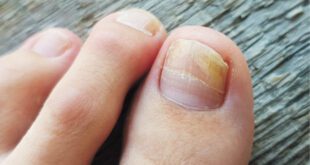 Overactive bladder (OAB) is a common condition that affects millions of people worldwide. It’s characterized by frequent and urgent urges to urinate, often accompanied by involuntary urine leakage. While OAB is not life-threatening, it can significantly impact an individual’s quality of life, causing discomfort, embarrassment, and disruption to daily activities.
Overactive bladder (OAB) is a common condition that affects millions of people worldwide. It’s characterized by frequent and urgent urges to urinate, often accompanied by involuntary urine leakage. While OAB is not life-threatening, it can significantly impact an individual’s quality of life, causing discomfort, embarrassment, and disruption to daily activities.
Understanding Overactive Bladder
Overactive bladder occurs when the bladder muscle contracts involuntarily, even when the bladder isn’t full. This results in sudden, intense urges to urinate that can be difficult to control. OAB is not a normal part of aging, although it becomes more common as people get older. It’s important to distinguish OAB from other urinary conditions, such as urinary tract infections or prostate problems in men.
Prevalence of Overactive Bladder
OAB is more common than many people realize. It’s estimated that about 16% of the adult population experiences symptoms of OAB. The prevalence increases with age, affecting up to 30% of older adults. Despite its prevalence, many individuals with OAB do not seek medical help due to embarrassment or the misconception that it’s a normal part of aging.
Impact on Quality of Life
The effects of OAB on an individual’s quality of life can be profound and far-reaching. People with OAB often experience:
1. Sleep disruption: Frequent nighttime urination (nocturia) can lead to poor sleep quality and daytime fatigue.
2. Social isolation: Fear of accidents or being far from a bathroom can cause individuals to avoid social situations.
3. Emotional distress: Anxiety, depression, and low self-esteem are common among those with OAB.
4. Reduced productivity: Frequent bathroom breaks can interfere with work and daily activities.
5. Relationship strain: OAB can impact intimate relationships and cause embarrassment with partners.
6. Physical discomfort: The constant urge to urinate can be physically uncomfortable and distracting.
Coping and Support
Living with OAB can be challenging, but there are ways to cope and find support:
1. Join support groups: Connecting with others who have OAB can provide emotional support and practical tips.
2. Communicate openly: Discuss your condition with family, friends, and colleagues to help them understand your needs.
3. Plan ahead: Know the location of bathrooms when going out and consider using absorbent products for peace of mind.
4. Seek professional help: Consult with a healthcare provider or urologist for proper diagnosis and treatment options.
Lifestyle Changes to Manage OAB Symptoms
While medical treatments are available, many people find relief through lifestyle modifications:
1. Bladder training: Gradually increasing the time between bathroom visits can help improve bladder control.
2. Pelvic floor exercises: Strengthening the pelvic floor muscles (Kegel exercises) can improve bladder control.
3. Dietary changes: Avoiding bladder irritants such as caffeine, alcohol, and spicy foods can reduce symptoms.
4. Fluid management: Maintaining proper hydration while avoiding excessive fluid intake, especially before bedtime.
5. Weight management: Maintaining a healthy weight can reduce pressure on the bladder and improve symptoms.
6. Scheduled voiding: Using the bathroom at regular intervals rather than waiting for the urge to urinate.
Educational Resources
Education is key to managing OAB effectively. Patients can benefit from:
1. Online resources: Reputable websites offer information on OAB, its causes, and management strategies.
2. Healthcare provider education: Urologists and continence specialists can provide personalized advice and treatment plans.
3. Workshops and seminars: Many healthcare facilities offer educational sessions on bladder health and OAB management.
4. Self-help books: There are numerous books available that provide in-depth information and coping strategies for OAB.
Solutions, Including Utiva Bladder Health Product
While lifestyle changes are often the first line of defense against OAB, some individuals may benefit from additional support. One such option is the Utiva Bladder Health Product. This natural supplement is designed to support bladder health and may help alleviate some symptoms of OAB.
Utiva Bladder Health Product contains ingredients that have been traditionally used to support urinary tract health. While it’s not a cure for OAB, some users report improved bladder control and reduced urinary urgency with regular use. As with any supplement, it’s important to consult with a healthcare provider before starting use, especially if you’re taking other medications.
It’s worth noting that while natural products like Utiva may offer benefits, they should be used as part of a comprehensive approach to managing OAB. This approach may include lifestyle changes, pelvic floor exercises, and medical treatments as recommended by a healthcare provider.
In conclusion, overactive bladder is a common
condition that can significantly impact quality of life. However, with proper understanding, support, and management strategies, individuals with OAB can lead fulfilling lives. By combining lifestyle changes, education, and potentially beneficial products like Utiva Bladder Health, many people find relief from their OAB symptoms. Remember, if you’re experiencing symptoms of OAB, it’s important to seek professional medical advice for proper diagnosis and personalized treatment options.
Sources:
• https://www.utivahealth.ca/blogs/resources/can-you-treat-overactive-bladder-naturally
• https://www.utivahealth.ca/blogs/resources/the-side-effects-of-oab-medication-and-how-they-impact-patient-compliance
For more information, visit Utiva’s webpage.
https://www.utivahealth.com or call: 1-888-622-3613
 Central Florida Health and Wellness Magazine Health and Wellness Articles of the Villages
Central Florida Health and Wellness Magazine Health and Wellness Articles of the Villages



